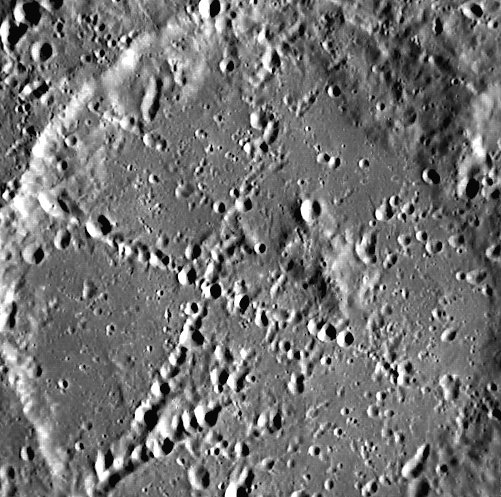With Messenger having ended its days with a very hard landing on Mercury, here’s a look at some of the things we learned from the mission.

1. It has water (lots of it!)
The discovery of water ice so close to the searing heat of the Sun was a huge surprise.
Despite an average surface temperature of 427°C, the planet could have over a trillion tonnes of frozen water on the permanently shadowed floors of impact craters at its poles.
“The discovery of water ice was unexpected, although there had been earlier hints in radar observations” says Prentice.
“There would have been no water when Mercury formed, that would have arrived later together with other volatile materials in comet and asteroid bombardments.”
2. Chemicals on its surface came from comets and asteroids
Prior to Messenger, we had hints that Mercury’s surface contained volatile chemicals such as potassium, sodium, sulphur and chlorine.
In theory these chemicals shouldn’t be there because the planet formed so close to the Sun.
“If Mercury formed as an iron-rich planet, it shouldn’t have had many volatile elements,” says Prentice.
As Messenger mapped Mercury’s surface it discovered these chemicals are located around asteroid and comet impact sites.
“Messenger shows us that a lot has happened in the last 4.5 billion years to change Mercury’s surface,” says Prentice.
“When you look carefully at these volatiles, especially potassium, we found that the ratios of potassium to thorium were identical to those found in Martian meteorites.
“So Mercury probably did form as an iron-rich planet, which was later bombarded by asteroids and comets containing volatiles.”
3. It used to be bigger
Wrinkles on the planet’s surface, known as scarps, show that Mercury has shrunk by over seven kilometres in radius over the past four-and-a-half billion years.
“Messenger completed the job of mapping the surface of Mercury, and it did so in amazing detail,” says Prentice.
NASA’s Mariner 10 spacecraft was only able to image one side of the planet.
“The measurements made back then failed to find any evidence of shrinkage,” says Prentice.
More: http://www.abc.net.au/science/articles/2015/04/27/4223167.htm
